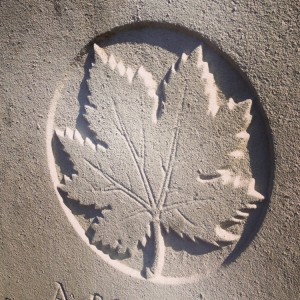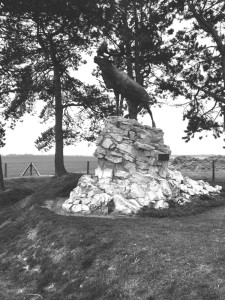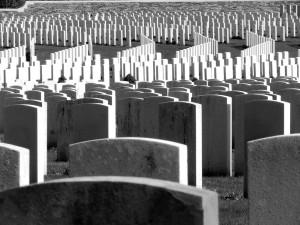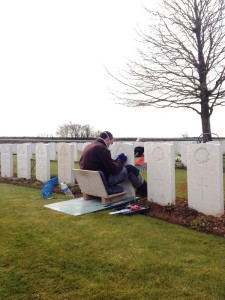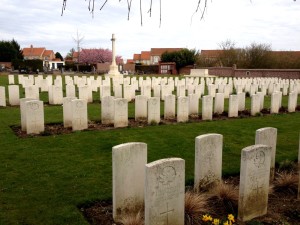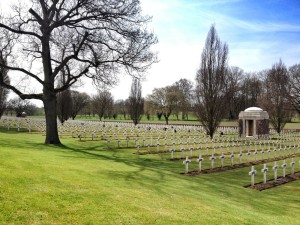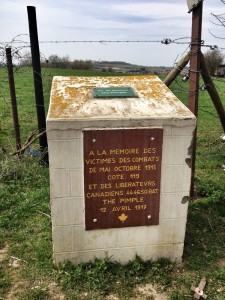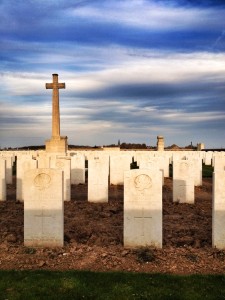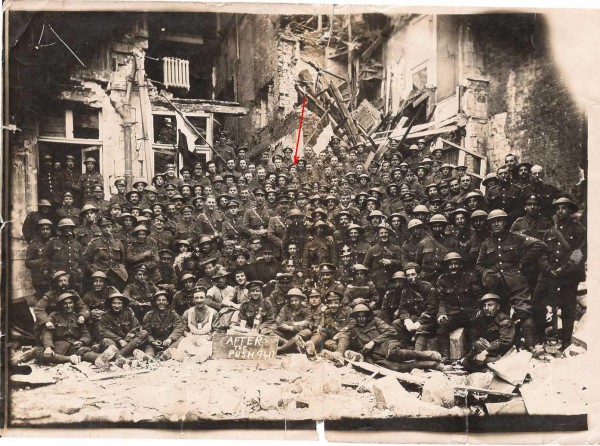Posts Tagged ‘Monchy’
Attending the unveiling of a new memorial to commemorate the losses of the 1st Battalion Essex Regiment and the Essex Yeomanry at Monchy-le-Preux
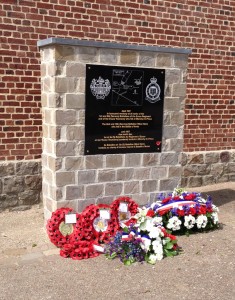
Memorial to commemorate the losses of the 1st Battalion Essex Regiment and the Essex Yeomanry at Monchy-le-Preux
Monchy-le-Preux has long been one of my favourite spots on the battlefields. The tale of its capture and subsequent defence make fascinating reading. As such, I was delighted to take my group of battlefield clients to attend the unveiling of a new memorial to the 1st Essex Regiment and Essex Yeomanry in the village square on Saturday 21 May 2016. The memorial is the brainchild of Dr Ted Bailey, whose grandfather served in the 1st Essex Regiment.
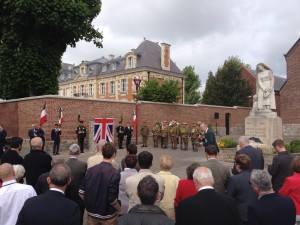
The start of the ceremony, 21 May 2016
Monchy was chosen as the site for this memorial as it is forever associated with the losses sustained by the cavalrymen of the Essex Yeomanry who aided the capture of the village on 11 April 1917. During this action, Lance Corporal Harold Mugford held back the advancing enemy singlehandedly, although seriously injured. For his actions he was awarded the Victoria Cross. Three days later the 1st Essex Regiment and Newfoundland Regiment launched an ill-fated push eastwards up Infantry Hill. The Newfoundlanders losses are commemorated with one of their five caribou in the centre of the village. Dr Ted Bailey has sought to redress this imbalance with a memorial to the memory of the Essex Regiment and Yeomanry.
The press release distributed prior to the unveiling provides additional detail on the two actions of the Essex Regiment and Yeomanry at Monchy:
On 11 April, the Essex Yeomanry, as part of a mounted division, bravely attacked Monchy in a snowstorm, galloping into the village but were met with heavy fire and lost 135 men, 29 killed in action, and most of their horses. Machine Gunner Lance-Corporal Harold Mugford doggedly defended the position under severe enemy pressure although severely wounded in both legs which were subsequently amputated. He was awarded the Victoria Cross and survived the war with distinction.
On 14 April, the 1st Battalion Essex Regiment attacked east of Monchy into a wooded area aiming for their objective, some high ground known as Infantry Hill. Initial success, with ground captured and prisoners taken, was reversed by a heavy German artillery barrage plus a simultaneous counter attack by the 3rd Bavarian Regiment, one of the enemy’s finest fighting units. The battalion suffered 661 casualties, so many that a temporary battalion had to be formed with the Newfoundland Battalion, named the ‘1st Newfoundessex’, comprising only 400 men.
Other Essex Battalions were also in the vicinity during this larger Arras engagement. The 2nd Battalion was in action on 9 April losing 78 men whilst the 9th Battalion lost 163 men.
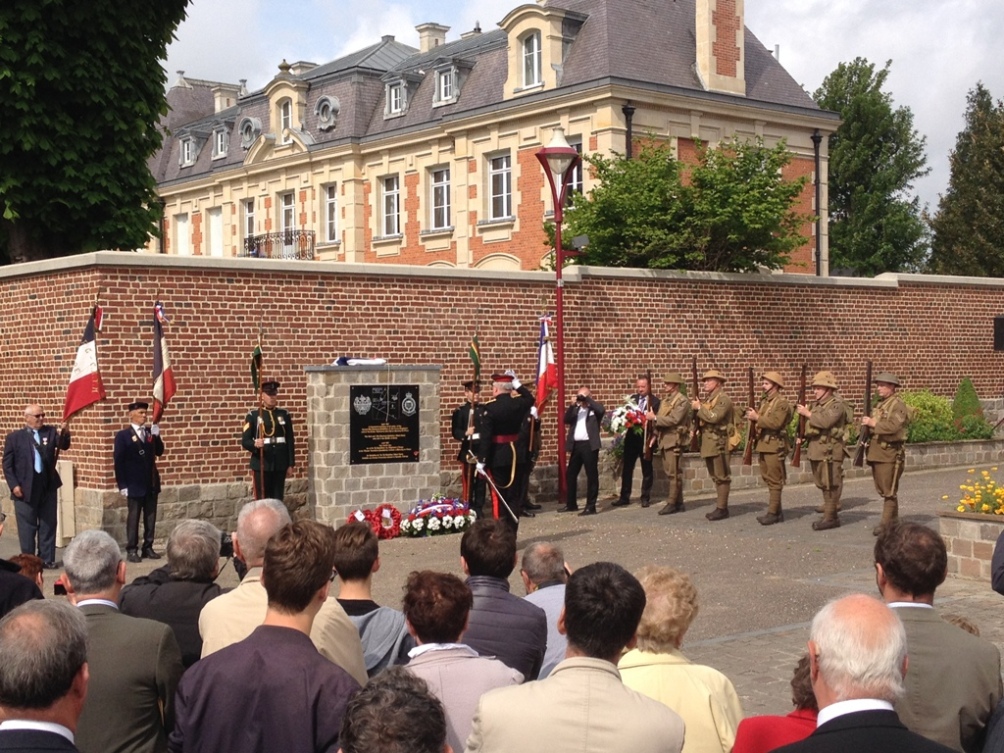
Wreath laying at the memorial
The unveiling ceremony was very well attended with a long list of dignitaries from the UK along with a great many locals. The memorial can be visited in the square outside the church just off the Rue de la Chaussy. It stands a mere 50 metres away from the Newfoundland caribou.
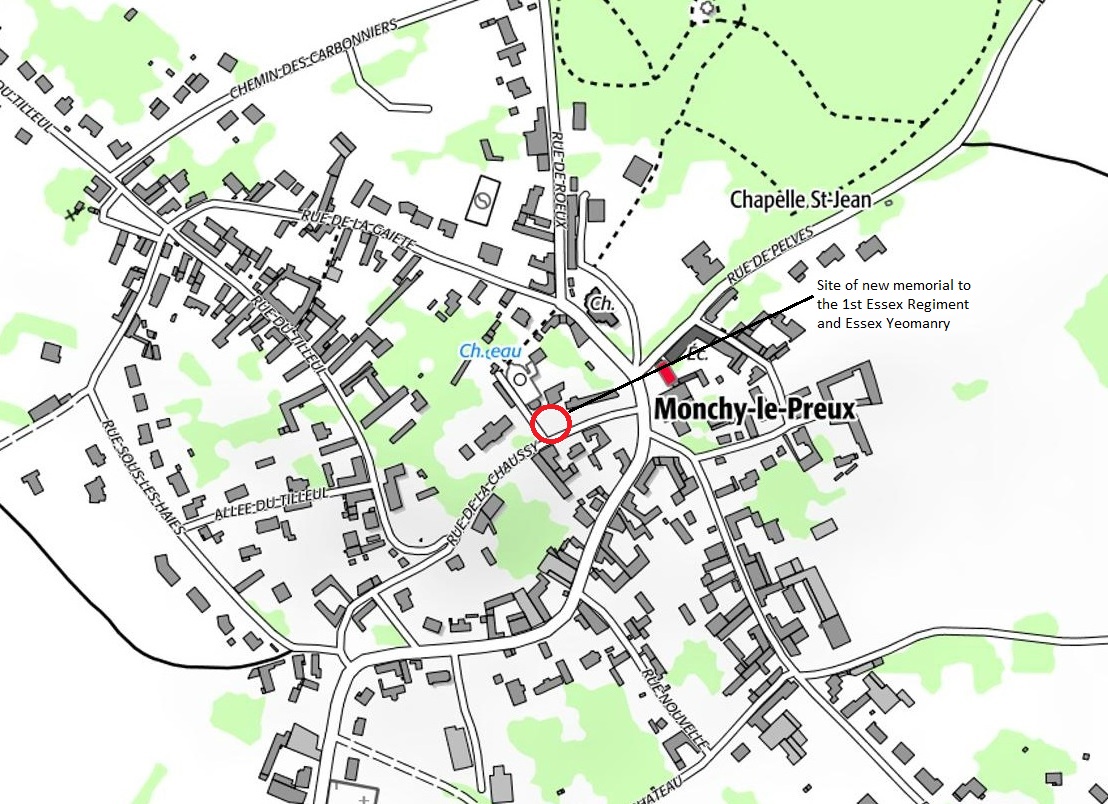
Map showing location of the new memorial to the 1st Essex Regiment and Essex Yeomanry at Monchy-le-Preux. Map courtesy of Geoportail www.geoportail.gouv.fr/
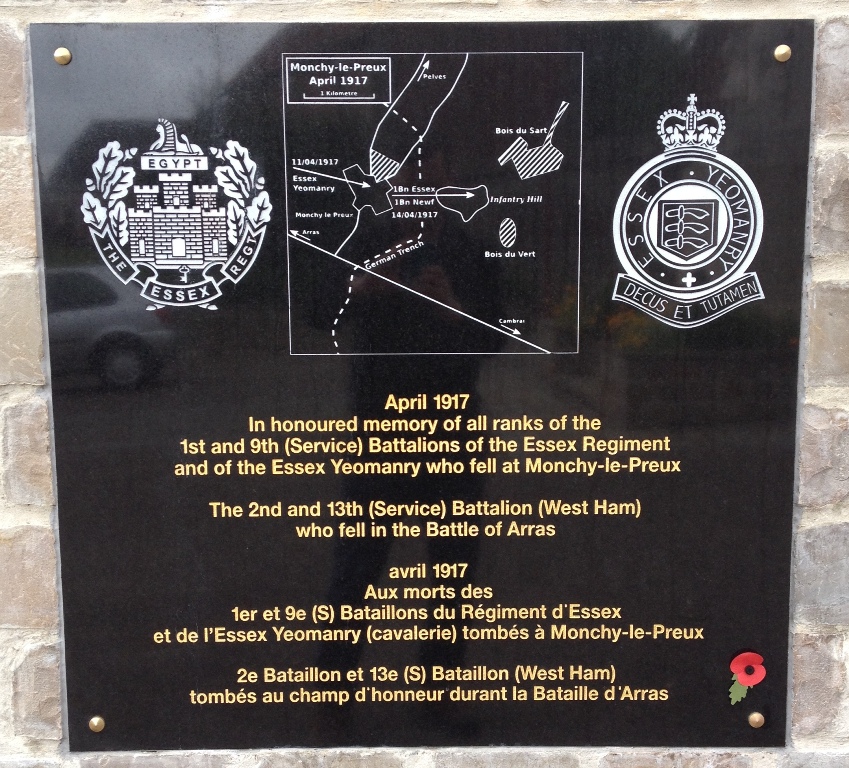
Detail on the plaque, Monchy le Preux
I spoke at the Thames Valley Branch of the Western Front Association (WFA) last Thursday (28 April). When first approached I had to choose between speaking about the Livens Large Gallery Flame Projector on the Somme or the subject of our last book, The Battle of Arras. I opted for the latter, mainly because I figured that the Channel 4 Time Team programme would have been only shown a short time before and so many of those attending would know at least the gist of the story. So, Arras it was. The talk was to last for about an hour (as it was, I think I spoke for nearer 70 minutes) and so this necessitated a good deal of reading to refresh the memory. I prepared a PowerPoint presentation to illustrate some aspects of the talk and managed to get panoramas to slowly scroll across the screen too (a technical feat I was quite pleased with!)
The talk was entitled “The Battle of Arras: April – May 1917? and was well attended with about 45 people regulars plus my brother Mark Banning and his friend and regular battlefield companion Malcolm Sime.
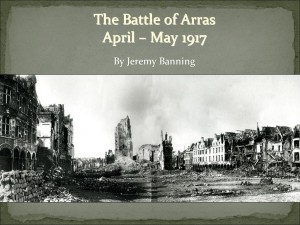 It was structured to not merely cover the battle but start with warfare in the Arras area in October 1914, look at the costly French actions of 1915 and then move on to British occupation in March 1916. The German attack against the 47th (London) Division on Vimy Ridge was touched upon and then I covered a basic backdrop to battle from the political and military standpoint and explained in detail the new German policy of ‘elastic defence’ to be brought into play for 1917. Moving through the Chantilly and Calais conferences I then spent some time on the German retreat to the Hindenburg Line (Operation Alberich) before exploring preparations for battle such as the tremendous work of the Royal Engineers. I also looked into French preparations, the actions of General Robert Nivelle and the extraordinary series of leaks and security lapses that marred the French pre-battle period. By this time half an hour had gone but I felt it important to set the scene fully and not merely delve straight into the battle itself.
It was structured to not merely cover the battle but start with warfare in the Arras area in October 1914, look at the costly French actions of 1915 and then move on to British occupation in March 1916. The German attack against the 47th (London) Division on Vimy Ridge was touched upon and then I covered a basic backdrop to battle from the political and military standpoint and explained in detail the new German policy of ‘elastic defence’ to be brought into play for 1917. Moving through the Chantilly and Calais conferences I then spent some time on the German retreat to the Hindenburg Line (Operation Alberich) before exploring preparations for battle such as the tremendous work of the Royal Engineers. I also looked into French preparations, the actions of General Robert Nivelle and the extraordinary series of leaks and security lapses that marred the French pre-battle period. By this time half an hour had gone but I felt it important to set the scene fully and not merely delve straight into the battle itself.
I structured the actual battle part of the talk by focussing on the First and Third Army fronts from north to south, starting with the Canadian Corps attack on Vimy Ridge before moving into what I always think of the main ‘Arras proper’ battlefield. Realising that no talk about the Battle of the Somme would neglect to work its way down the front line for 1 July 1916 I adopted the same structure – following each division’s success (or failure) as we moved southwards across the Scarpe and Arras-Cambrai road into Hindenburg Line territory until ending with the 21st Division at the south of the attacking frontage. Explaining the reasons for success in many sectors and failure in others I then worked my way through the battle focussing on stand-out actions. These included the capture of Monchy-le-Preux on 11 April 1917 and the destruction of the cavalry of the Essex Yeomanry and 10th Hussars in the village.
I also covered the attack by two battalions of the 10th Brigade (4th Division) towards the village of Roeux and the Chemical Works. 1/Royal Irish Fusiliers and 2/Seaforth Highlanders suffered grievous losses in the attack; the Seaforths attacked with 12 officers & 420 Other Ranks and their losses were all 12 officers & 363 O.R. This meant that a mere 57 men survived the action unwounded – and the objective wasn’t gained in any way. The beautiful Seaforths Cross on the Sunken Lane at Fampoux is a reminder of the men who attacked and suffered so much that day. I touched on the fighting at Bullecourt that day but felt that the disastrous actions around that particular salient village warranted a talk of their own.
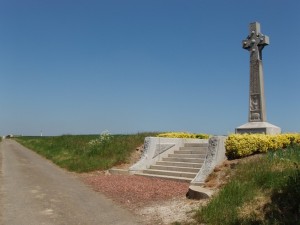 The next attack to be looked into was the attack up Infantry Hill by the Newfoundland Regiment and 1/Essex Regiment on 14 April 1917 – an attack that almost destroyed both battalions and which left the way open for the German reoccupation of Monchy. The day was saved by a gallant band of men led by Lt Col James Forbes Robertson, CO of the Newfoundlanders who organised a small group of men to run to eastern buy discount ambien edge of village and open rifle fire. For five hours their fire held the Germans at bay until the village was relieved. All were decorated and became known as ‘The Men Who Saved Monchy’.
The next attack to be looked into was the attack up Infantry Hill by the Newfoundland Regiment and 1/Essex Regiment on 14 April 1917 – an attack that almost destroyed both battalions and which left the way open for the German reoccupation of Monchy. The day was saved by a gallant band of men led by Lt Col James Forbes Robertson, CO of the Newfoundlanders who organised a small group of men to run to eastern buy discount ambien edge of village and open rifle fire. For five hours their fire held the Germans at bay until the village was relieved. All were decorated and became known as ‘The Men Who Saved Monchy’.
I then worked through the month of April, looking at the failed French attacks on the Aisne and then explaining the movements of 23 April (Second Battle of the Scarpe) with particular emphasis on the fighting for Roeux and the Chemical Works by the 51st (Highland) Division. The battle was deteriorating against well organised and deployed German troops employing the new ‘elastic defence’ doctrine. It was a dreadful time – Third Army suffered 8,000 casualties alone on the 23rd/24th April.
It seemed apt giving the talk on 28 April as I then touched on the attack that day 94 years ago and the capture of the village of Arleux. It was building to the climax of battle – the Third Battle of the Scarpe on 3 May 1917 – a very dark day indeed for the British Army. The 21km frontage from Fresnoy in the north to Bullecourt (again) in the south lent itself to particular problems. The Australians at Bullecourt wanted a night attack to aid their chances of success – in the north this would have been disastrous for the attack on Oppy Wood. A miserable compromise was reached and Zero Hour was set for 3.45am – the attack was still to go in at night time. It was a terrible fiasco – many units were unable to even find their starting points and had no idea of direction to attack, merely following the direction of the artillery barrage with the hope of finding some Germans. Accounts mention morale being poor and a general malaise amongst the depleted attacking divisions. I read from the Official History: Military Operations France and Belgium 1917 by Cyril Falls as it summed up most eloquently the reasons for failure on 3 May 1917:
“The confusion caused by the darkness; the speed with which the German artillery opened fire; the manner in which it concentrated upon the British infantry, almost neglecting the artillery; the intensity of its fire, the heaviest that many an experienced soldier had ever witnessed, seemingly unchecked by British counter-battery fire and lasting almost without slackening for fifteen hours; the readiness with which the German infantry yielded to the first assault and the energy of its counter-attack; and, it must be added, the bewilderment of the British infantry on finding itself in the open and its inability to withstand any resolute counter-attack.”
I concluded with the finals stages of battle, the loss of Fresnoy and eventual capture of Roeux and the Chemical Works and for my last slide whilst talking about the men who had done the fighting I showed one of my favourite pictures. It shows a triumphant shot of a group of the 12/West Yorkshire Regiment in Arras celebrating their success of 9 April with captured booty. I was amazed when a man in the front put his hand up, saying he had spotted his grandfather in the photo! Apparently the only wartime souvenirs that his grandfather left were his medals and a copy of this photo. The man was 50496 Acting Corporal John Davison Johnson (marked with a red arrow in the photo) and I thank his grandson, John Johnson for this information – it quite made my night!
All feedback received has been good and the Branch Chairman, Bridgeen Fox, wrote very warmly afterwards with her thanks. Her comments can be read here. As she herself said, “it should have raised the profile of the battles of Arras and I hope it will have encouraged more people to explore the area”.
When I have some time I will write a blog piece with detail about the 3 May fighting. My thanks to Geoff Sullivan from the wonderful ‘Geoff’s Search Engine’ for furnishing me with some tremendous statistics for that day. If anyone is intersted in hearing this talk then please contact me. I am speaking on this subject in Bristol in October – see here for details. For those with an interest in the battle our panorama book on the subject is available here. Alternatively, if you are interested in a battlefield tour to Arras then please contact me – I would be happy to discuss.

